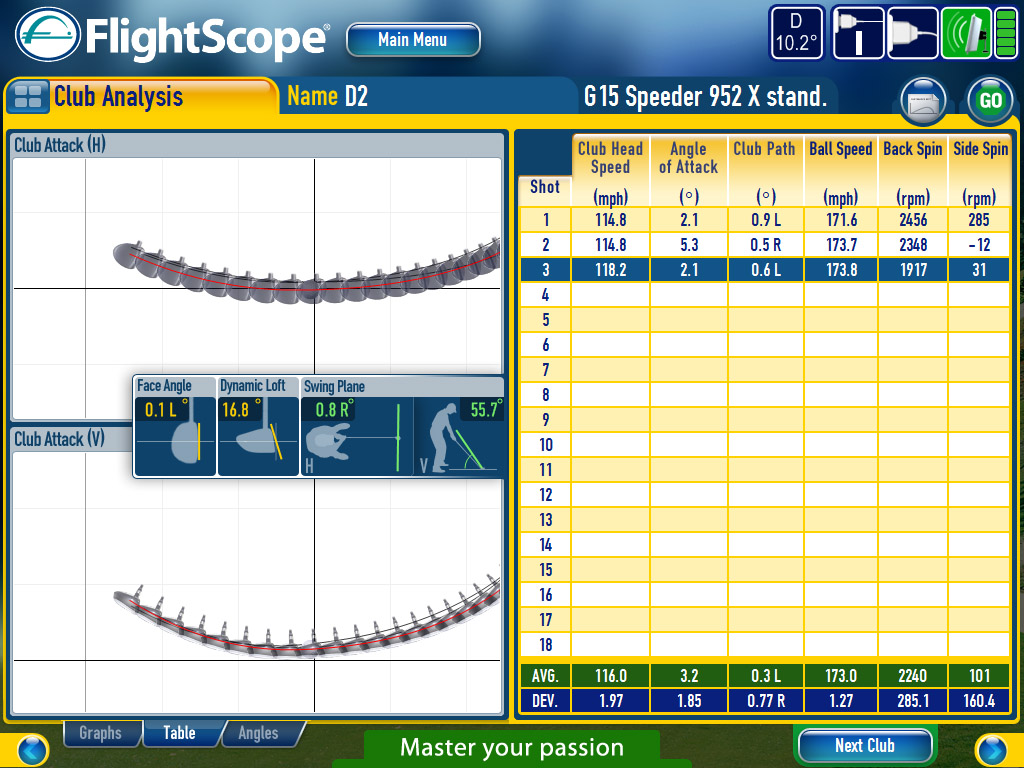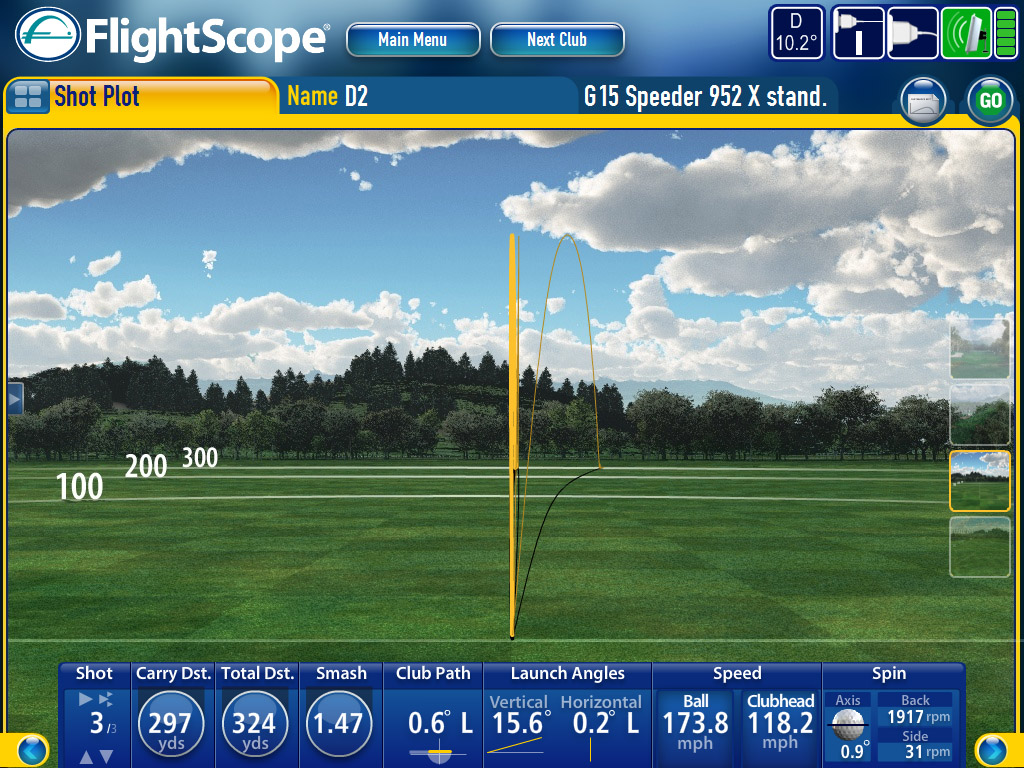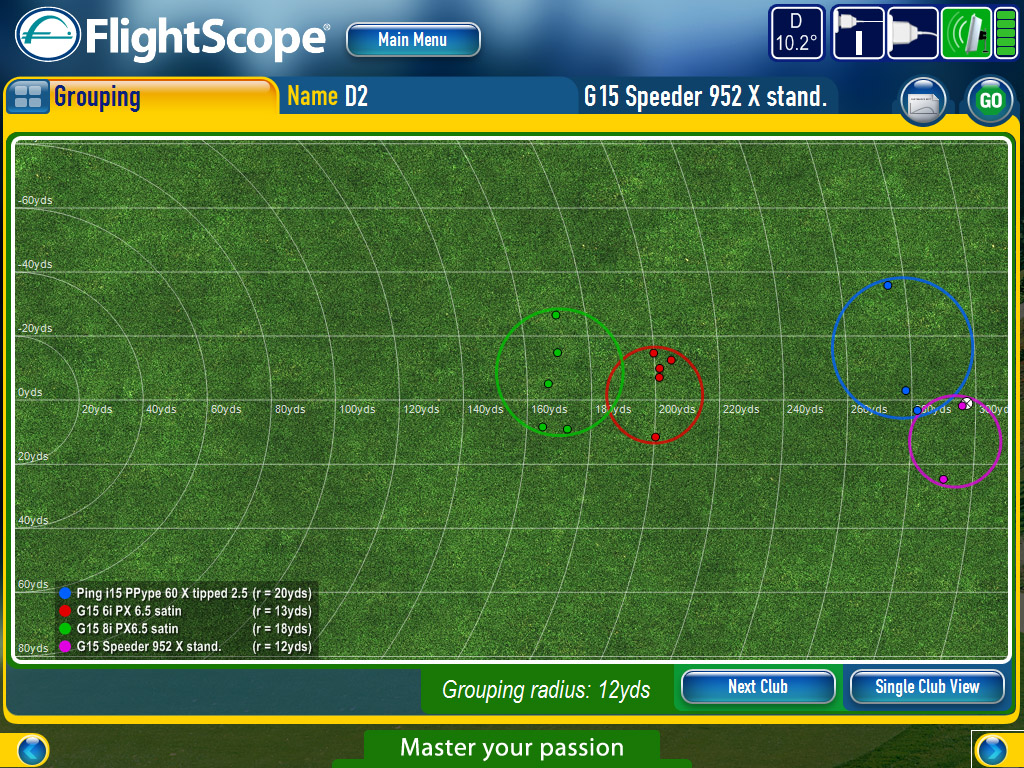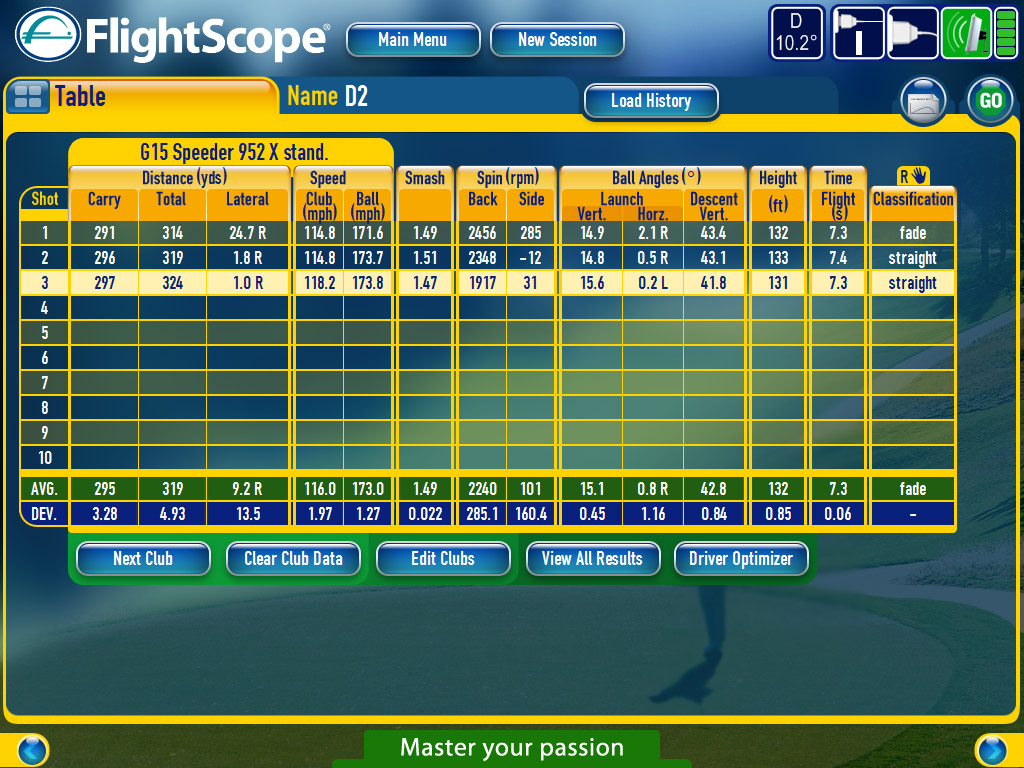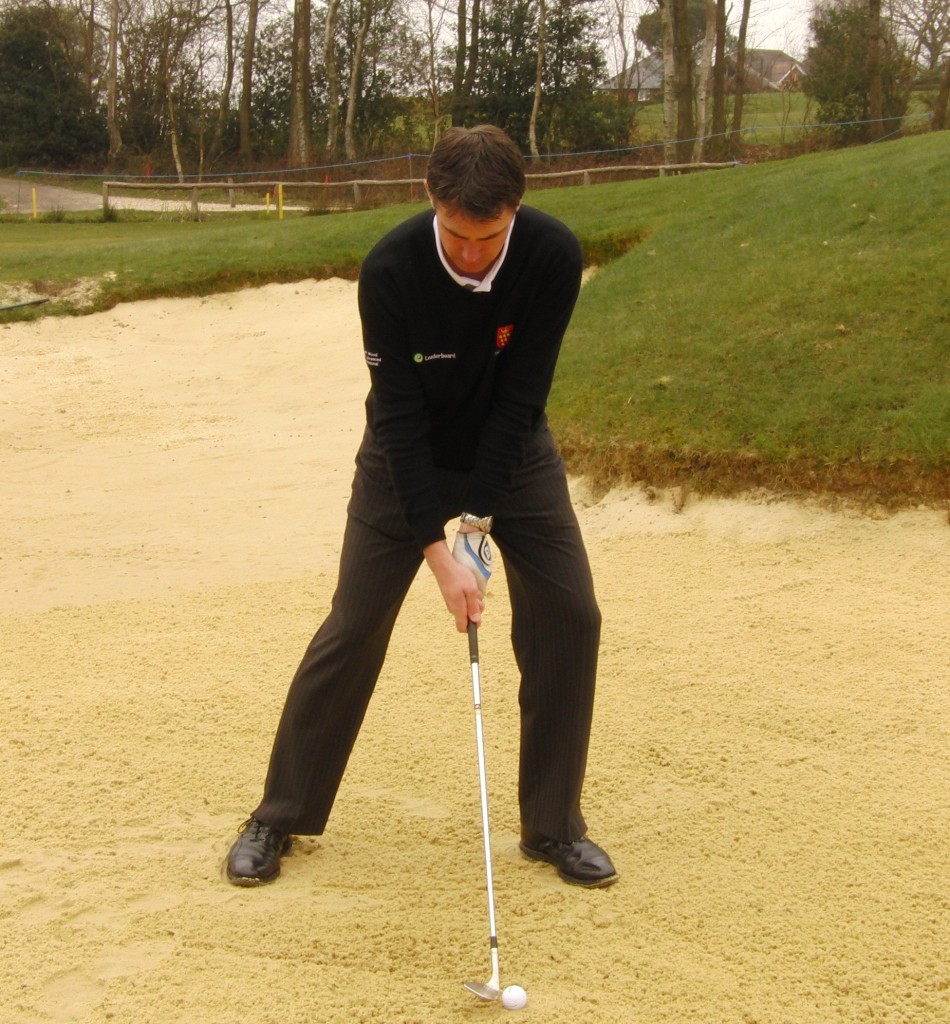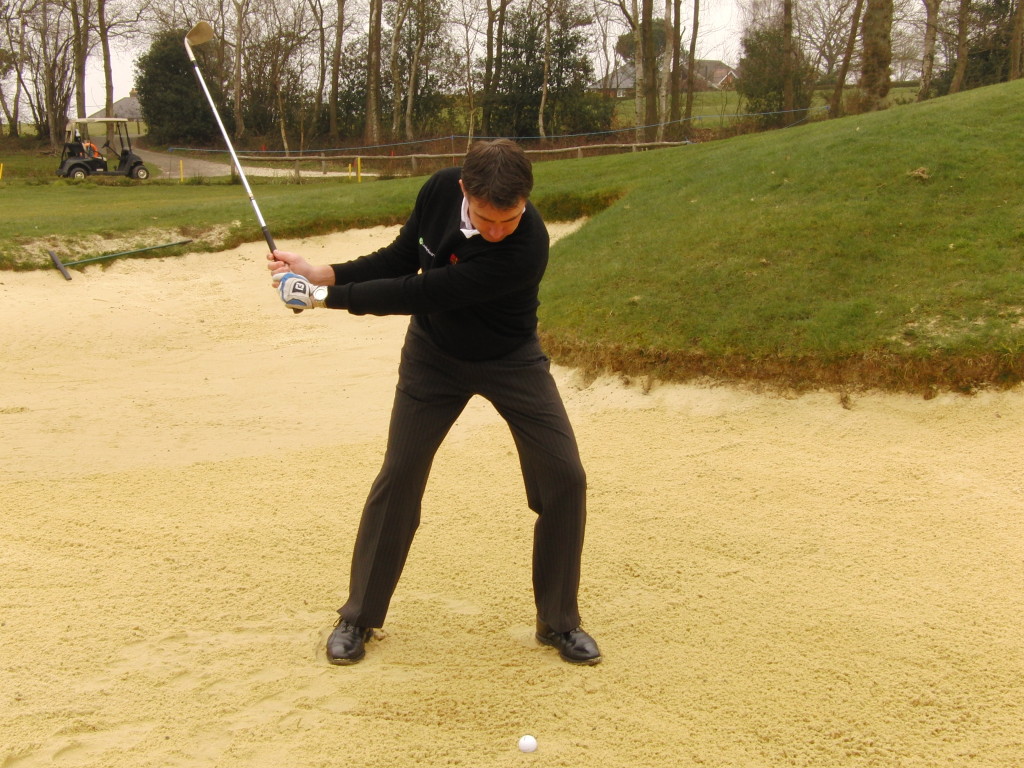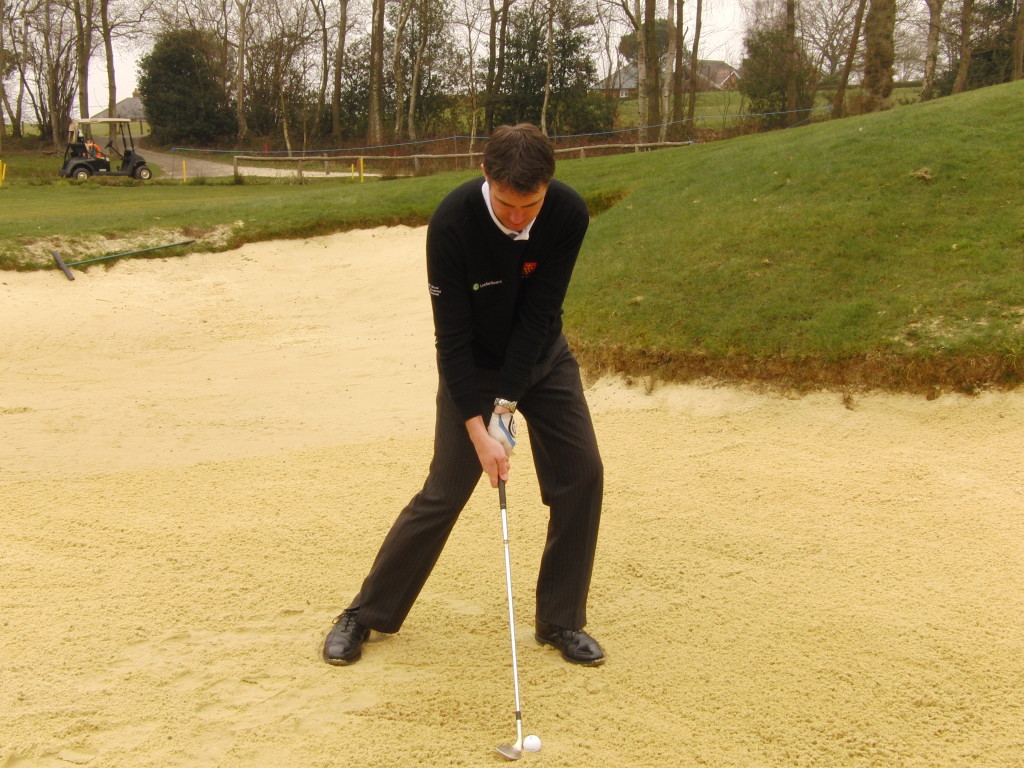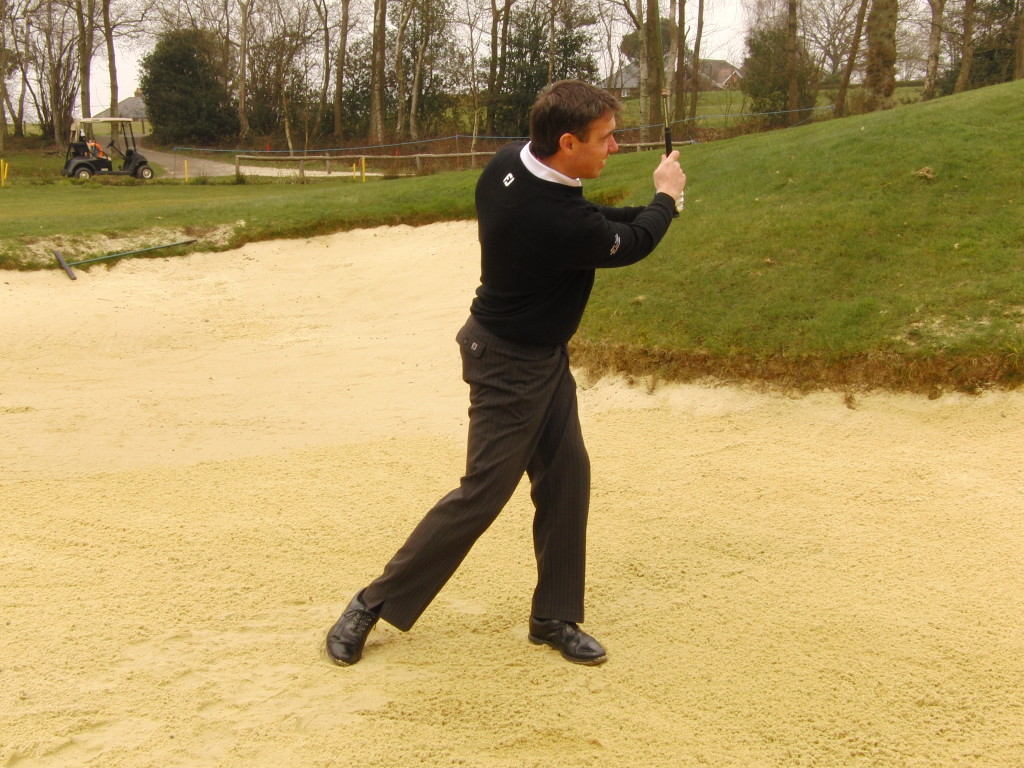Posts Tagged ‘Golf Lessons Kent’
Bizarre British Open Story
Bizarre British Open Story
The summer was 1976 was wicked hot that July as I made my way to Royal Birkdale, for my first ever taste of the British Open. I was in awe of Jack, Arnie and eventual winner Johnny Miller but after the first days blistering scores, in unheard of perfect weather, the name splashed on the sports pages was still that of one Maurice G. Flitcroft,
Filtcroft, was a chain-smoking crane-operator from near by Barrow-in-Furness who having bought a half-set of mail order clubs had set his sights on finding “fame and fortune” by applying to play in the British Open “with Jack Nicklaus and all that lot”. He prepared by hacking balls on a local football field armed only with a Peter Allis instruction book from the library and some articles by Al Geiberger.
Shortly thereafter he acquired an entry form from the unsuspecting Royal and Ancient, (who run the event) When he discovered, to his shock, that any amateur entering R & A competitions needed an official handicap something, he lacked – he simply chose the other option on the entry form and declared himself to be a professional.
Invited to play in the qualifier at Formby, he put in a performance which one witness described as a “blizzard of triple and quadruple bogeys ruined by a solitary par”, achieving a total of 121 – 49 over par, the worst score recorded in the tournament’s 141-year history. Since his marker latter admitted to having lost count on several holes the actual score is regarded as only a rough estimate.
Playing partner, Jim Howard, recalled his suspicions being aroused almost immediately: “After gripping the club like he was intent on murdering someone, Flitcroft hoisted it straight up, came down vertically. The ball travelled precisely four feet,” he said. “I put that one down to nerves, but after he shanked a second one we called the R&A officials.” Under the rules of the tournament, however, nothing could be done. “It wasn’t funny at the time,” Howard recalled.
Flitcroft’s performance dominated the next day’s sports pages, while stars such as Jack Nicklaus found themselves relegated to the small print. Flitcroft was interviewed endlessly. The score, he maintained, “weren’t a fair reflection” of his play. He had been suffering from “lumbago and fibrositis, but I don’t want to make excuses”, and he blamed the fact that he had left his four-wood in the car: “I was an expert with the four-wood, deadly accurate.”
Furious that their game had been held up to ridicule, R&A secretary, Keith Mackenzie, tightened the entry rules and turned Flitcroft down when he applied to play the following year, due to “no proof of an improvement.” The letter sparked a prolonged correspondence, during which Flitcroft challenged Mackenzie to a match at the Old Course to settle the debate about talent. Not amused, Mackenzie subsequently Flitcroft was banned from all R&A tournaments for life.
Refusing to be beaten, in 1978 he posed as an American professional named Gene Pacecki (“as in pay cheque”, he explained helpfully) and blagged his way into the qualifier at South Herts, where he was detected after a few holes and bundled unceremoniously off the course. In 1983, he tried again, this time disguised, dyeing his hair, donning a false moustache and masquerading as Gerald Hoppy, a professional golfer from Switzerland. He fared rather better this time, playing nine holes and 63 strokes before officials realized that they had “another Maurice Flitcroft” on their hands. “Imagine their surprise when they discovered they had the actual Maurice Flitcroft,” he said.
In 1990 he entered this time as James Beau Jolley (as in Beaujolais), an American golf professional. After a double bogey at the first hole and a bogey at the second; he claimed to be “looking at a par” at the third before he was rudely interrupted by an R&A golf cart which screeched to a halt in front of him and escorted him off the course.
Flitcroft never understood why the R&A was so upset. “I never set out to belittle them. Golf’s just a game and I tried my best. What did they need to get so uptight about?”
Flitcroft’s antics made him a cult figure in some golfing circles and he became a “C” list celebrity receiving mail from around the world addressed simply to Maurice Flitcroft, Golfer, England. A club in New York named a trophy after him, while another, Blythfield Country Club in Michigan, named a member-guest tournament in his honor, the event featuring a green with two holes to give the truly hopeless a sporting chance. In 1988, when Flitcroft was flown in as an honorary competitor at the event, he explained that it was the first time he and his wife had been out of the house together “since our gas oven exploded”. His game seemed to have improved somewhat and he completed the course with a score in the low 90s. “I hit a lot of good shots,” he claimed proudly.
During one of his last interviews Flitcroft recalled, “I was looking to find fame and fortune, but only achieved one of the two!”
From Your Friends at Mark Wood Golf Academy
PS. Come down and tee it up to make some magic moments of your own. Check our website at
Mark Wood
PGA Advanced Professional
UK’s No1 Golf Coach
The Best Golf Lessons in Sussex and Kent
Find a Coach
“We all continue to learn; if we didn’t we would be in trouble. I’ve learned an awful lot from playing with great golfers; with the exposure to them and talking with them.”
Jack Nicklaus
Since it is perfect practice that makes perfect and not just practice, we must decide by whose standards we are going to define perfection. These are the options. We can seek out a coach and mentor, and accept his advice on the steps we must take in order to achieve perfection. Examples would be the gaggle of pro’s who follow coaches like Jimmy Ballard and David Leadbetter. This group includes players like Nick Faldo, Nick Price, Sandy Lyle and Johnny Miller. Arnie had in his father, Deacon Palmer, a person whose knowledge of his swing he could trust and on whose help he could rely to improve, repair and revamp his game as necessary. Nicklaus’ mentor and coach was Jack Grout, the local professional at the Country Club in Ohio, near which Nicklaus grew up. At the beginning of each new golf season Jack would go to Grout and say to him, “I’d like to take up golf. Show me how to hold the club, address the ball and swing the club.” This not only demonstrates the value of having a sound instructor, but also the value of going back to the basics of your craft, whatever it may be. I can’t overstress the importance of a yearly review of your techniques and strategies with someone who both knows and cares about the desired outcome. Regardless of your profession, it is easy to slip into bad habits that inhibit your progress. By allowing someone knowledgeable to critique your performance, you can often uncover basic flaws that are costing you strokes, sales, time, money and customers.
From Your Friends at Mark Wood Golf Academy
PS. Come down and tee it up to make some magic moments of your own. Check our website at
Mark Wood
PGA Advanced Professional
UK’s No1 Golf Coach
The Best Golf Lessons in Sussex and Kent
Hogan’s Miracle Letter
Hogan’s Miracle Letter
Ben Hogan once said he believed he had a purpose in life, and it was to give courage to those who are sick or broken in body. In one case, by writing an encouraging letter to a young boy he had never met, Hogan did more than just giving him courage. He helped inspire another champion.
Bobby Nichols was born and raised in Louisville, Kentucky. After caddying for several years round the time he was 14 he really started to take golf seriously. He developed a fine, fluid swing and won the State caddie championship at the age of 15. Then came the night of September 4, 1952, he was 16 years old with a bunch of friends traveling a high speed in a car which at 8pm, failed to make the next bend. When they finally came to rest, four boys and a girl lay trapped in the twisted wreckage. Firefighters, police and paramedics arrived quickly and fought to extricate them. A doctor at the scene indicated that no time should be wasted on Nichols since he wasn’t going to make it anyway. A priest performed last rites on the 16 year-old boy.
Two days later, Bobby was still clinging to life but the medical prognosis was not good. He was still unconscious and, in addition to a variety of minor injuries, he had a broken pelvis, a damaged spine, a collapsed lung, a bruised kidney, brain concussion and was paralyzed from the waist down. The doctor advised his distressed parents that, if he lived, he would probably never walk again. His dreams of golfing greatness had apparently ended in a head-on collision with a utility pole. For 13 tension-filled days friends and family maintained a vigil beside Bobby’s hospital bed. Suddenly he opened his eyes, looked around, and asked two questions. How long had he been asleep, and had he missed football practice? He quickly learned the answer to the second question when he discovered to his horror that he couldn’t move his legs. Bobby Nichols went home a month later. At least he was alive.
The weeks dragged by, and Bobby’s spirits sank even lower as it became more and more apparent that he might not recover. Then his golf coach, Brother Jerome conceived an idea that just might help. He knew that Bobby idolized Ben Hogan, who had gone through a similar terrible experience. Perhaps the great golfer would be kind enough to write the boy a few words of encouragement. There was nothing to lose, so he wrote to Hogan asking for his help, and the Hawk quickly responded. When Bobby’s mother handed him the letter with his idol’s name above the return address, he thought it was a practical joke, but when he opened the letter he found it was genuine. Hogan had written:
Dear Bobby,
I received a letter the other day from Brother Jerome at Saint Xavier’s High School, telling of your misfortune, and asking me to drop you a note. I was delighted to receive his letter, although it wasn’t necessary for him to tell me to write you. I would have done that anyway knowing of your accident.
I don’t know if there is anything I can say to you that would console you mentally or physically since I know you have been through everything. I always figured that no one ever went through life without some things happening to them, some of them minor, some major. Those of us who have had minor things just don’t have to work as hard recuperating as the people like you who have the major things.
I don’t have to tell you that the human body probably is the greatest machine ever known plus the fact that given the chance, it will heal any sickness or hurt. It is the determination and will of a person to do the exercises that will get him well, and, as you certainly know, there are no shortcuts.
I don’t want to sound like a preacher, and I hope you understand my thought for you. I am terribly sorry for your misfortune and you shall be remembered in my prayers.
My best wishes for a complete and speedy recovery.
I am sincerely,
Ben Hogan
The letter had an effect no doctor could ever have hoped to achieve. By the time he had finished reading it, Bobby Nichols was determined to walk, to play golf and to be a champion. Only days after receiving the letter, he sat up unassisted for the first time. A few weeks later he was out of bed, on crutches, practicing his putting and chipping. One small step led to another until, after several months, the happiest day Bobby had experienced for a long time finally arrived, and he threw away his crutches.
12 years after the near fatal crash, the 28 year-old Nichols realized one of his lifelong ambitions when he was paired in a tournament with his idol, Ben Hogan. It was the 1964 PGA Championship held at the Columbus Country Club in Ohio, right in Jack Nicklaus’ back yard.
Nichols opened the tournament with a course record 64 in the first round. He followed that with a solid 71 in the second round and a scrambling 69 in the third, giving him a one shot lead over Arnold Palmer going into the final round. That evening, looking at the giant scoreboard, he was excited to see that Hogan had shot 68 and had moved up in the standings. Under the PGA’s complicated pairing system they would be playing together in the final round.
The gallery was 100% Arnie’s Army as Nichols came to the 10th tee. He could hear them telling one another, “Nichols is going to choke,” or, “He’s about to blow up.” He could hear them saying that Arnie was charging and quickly found out from the vocal crowd that Palmer had just eagled the 10th. He knew he needed a birdie at worst to stay in contention. The tenth was a 536 yard par five, with a large ravine guarding the left side of the green. The long-hitting Nichols hit his tee shot as hard as he had ever hit a drive in his life. It traveled straight as a bullet, 300 yards down the center of the fairway. From there, ignoring the ravine, he went for the green in two with a 3-wood, leaving his ball 40 feet from the cup. His long eagle putt rolled towards the hole, broke several feet, and fell into the cup, dead center! He was confident now that the championship was his. Birdies at the 15th and 17th gave him a three stroke advantage over Palmer and Nicklaus.
Nichols also set PGA Championship records at the time by leading the tournament after all four rounds and setting a new low 72 hole score of 271. It was his crowning achievement in a professional career that would span four decades. Even more, it was a dramatic demonstration of the power of persistence and determination to succeed, no matter what obstacles one encounters in life.
Later that evening, Hogan came up to Nichols and congratulated him again. “You know,” he said, “I would never have gone for the green on the 10th the way you did.” Nichols recalls, “It made me feel proud, hitting a shot Ben Hogan wouldn’t have attempted, and having him acknowledge it as a great shot!”
I hope you enjoyed the article, any comments or Questions then please leave a comment below..
Until next time I wish you all the golfing success
From Your Friends at Mark Wood Golf Academy
PS. Come down and tee it up to make some magic moments of your own. Check our website at
Mark Wood
PGA Advanced Professional
UK’s No1 Golf Coach
The Best Golf Lessons in Sussex and Kent
Mirroring
Mirroring
Alternatively, we can find another golfer whose swing or method we can attempt to emulate in the hope of achieving similar results. Greg Norman is an excellent example of this technique. He modeled his swing and many of his mannerisms after Jack Nicklaus, and it has paid off handsomely for him.
Ben Hogan, who dropped out of school prior to graduation, made up for his lack of education by being a voracious reader and a keen observer. He studied the golf swing as no one had done before. He viewed newsreel films of the best players to modify his hip action. He picked up his club head waggle from US Open winner, Johnny Revolta, and worked with his swing plane night after night in the bathroom mirrors of his hotel room. Other players hated to room next to him because of the incessant thump of golf balls hitting the baseboard as he practiced his putting stroke at all hours of the day and night.
When mirroring a golfer, it pays to find a player of similar age, height and build, making it easier to copy his swing.
Never underestimate the power of the written word to improve your putting, your swing or your life. Although it isn’t a good idea to be constantly tinkering and fiddling with your basic game, don’t be afraid of looking for valuable knowledge in the pages of a book.
Improve you game book a lesson with one of our PGA pros call now 07796 271661
I hope you enjoyed the article, any comments or Questions then please leave a comment below..
From Your Friends at Mark Wood Golf Academy
PS. Come down and tee it up to make some magic moments of your own. Check our website at
Mark Wood
PGA Advanced Professional
UK’s No1 Golf Coach
The Best Golf Lessons in Sussex and Kent
Make Practise Worth it!!
“When I was a little kid, I would pretend I had a shot to win the Masters or the Open, to make me try my best.”
Hale Irwin
The practice range is the only place you can find your faults and work at correcting them without it costing you strokes or money. The same is basically true of public speaking, selling, or almost anything you can think of. Practice allows you to record, film, examine and critique your own performance, in a positive way, to bring about change for the better. That’s why role-playing is such an important part of learning. A delightful TV ad depicts a teenager, playing alone among the evening sprinklers. He addresses his ball, takes a last glance at the green, and says something like, “He needs a birdie on this one to beat Freddie.” Then he hits a shot that comes to rest a few feet from the flag. Picking up his bag he adds, “It looks like we have a new PGA Champion!”
I’m sure you’ve played similar mind games, especially if you’ve been playing golf since childhood. Perhaps you’ve played two balls in practice rounds — one for you and one for Nicklaus. You may even have played tournament rounds in your head. Tom Watson said, after winning the 1977 British Open at Turnberry in an historic battle with Jack Nicklaus, that he played so well because he had done it some many times before. When reporters questioned this, he went on to explain that he had, on many occasions during practice rounds, role-played a one-on-one confrontation with Nicklaus. As a result he was not intimidated by the situation when it finally arose in real life.
I hope you enjoyed the article, any comments or Questions then please leave a comment below..
Until next time I wish you all the golfing success
From Your Friends at Mark Wood Golf Academy
PS. Come down and tee it up to make some magic moments of your own. Check our website at
Mark Wood
PGA Advanced Professional
UK’s No1 Golf Coach
The Best Golf Lessons in Sussex and Kent
Happy Birthday Monty!!
Colin Stuart Montgomerie, OBE (born 23 June 1963) is a Scottish professional golfer. He has won a record eight European Tour Order of Merit titles, including a streak of seven consecutively from 1993 to 1999. He has won 31 European Tour events, the most of any British player, placing him fourth on the all time list of golfers with most European Tour victories. He won three consecutive Volvo PGA Championship‘s at Wentworth Club between 1998 to 2000. He has finished runner-up on five occasions in major championship‘s.
although Scottish by birth and ancestry, he was raised in Yorkshire, England, where his father, James Montgomerie, was Managing Director of Fox’s Biscuits.[2] He spent a number of years with the Ilkley Golf Club, where he was tutored by the past professional Bill Ferguson. He was educated at both Leeds Grammar School and Strathallan School, Perthshire. During his time in Leeds, he became a supporter of Leeds United,[3] but was a loyal supporter of Glasgow Rangers. His father later became the secretary of Royal Troon Golf Club, one of Scotland’s most famous clubs.
Montgomerie became one of the first British golfers to go to a United States college, attending Houston Baptist University, where he played on the golf team and became its top player. He won three important Scottish amateur tournaments – the 1983 Scottish Youths Championship, the 1985 Scottish Stroke Play Championship, and the 1987 Scottish Amateur Championship. He also played for Scotland twice in the Eisenhower Trophy (1984 and 1986) and for Great Britain and Ireland in the Walker Cup twice (1985 and 1987). Between 1988–91, Montgomerie completed a degree in Accountancy at the University of Stirling.
Montgomerie turned professional in 1988, and was named the Rookie of the Year on the European Tour that season. He quickly developed into one of Europe’s top pros, winning his first event at the 1989 Portuguese Open by eight shots, and making his Ryder Cup debut in 1991. He finished first on the European Tour Order of Merit every year from 1993 to 1999 (a record for most consecutive Orders of Merit), and has 31 victories on the tour, including the 1998, 1999, and 2000 Volvo PGA Championships at Wentworth, England. He first reached the top-10 in the Official World Golf Rankings in 1994, and spent almost 400 weeks in the top-10.[4] His highest ranking was number two. In his prime Montgomerie was considered one of the best drivers of the golf ball in the world and became a very precise iron player, often able to judge the distance he hit the ball exactly from long range.
His form fell away gradually in the new millennium, partly due to marriage problems, and his ranking slumped to 82nd in the world, but he came back strongly in 2005, winning a record eighth European Tour Order of Merit and returning to the top ten in the World Rankings.[5] Late in 2005 he became the first man to win 20 million Euros on the European Tour—topping the European Tour’s all-time highest earners list. He remained the leader in career earnings on the European Tour until 2010, when he was surpassed by Ernie Els.
Despite the drop in form, his influence remained strong. In 2012, Montgomerie was named by the Golf Club Managers’ Association‘s Golf Club Management magazine as the seventh most powerful person in British golf.[6]
I hope you enjoyed the article, any comments or Questions then please leave a comment below..
Until next time I wish you all the golfing success
From Your Friends at Mark Wood Golf Academy
PS. Come down and tee it up to make some magic moments of your own. Check our website at
Mark Wood
PGA Advanced Professional
UK’s No1 Golf Coach
The Best Golf Lessons in Sussex and Kent
Instant replay
Instant replay
“I always achieve my most productive practice right after a round. Then, the mistakes are fresh in my mind, and I can go to the practice tee and work specifically on those mistakes.”
Jack Nicklaus
It is a trait of champions to employ the “instant reply mode” after every round.
What shots were executed well and what shots were executed badly?
What were the physical errors and the mental errors?
How and where could improvements be made?
Spend five minutes each and every day reflecting on your performance. Pat yourself on the back for your accomplishments but don’t fail to clearly analyze your mistakes and mentally rectify them before you start the next day. Decide what strategies you can use tomorrow that will be more effective. Commit to more preparation.
Tony Lema
I hope you enjoyed the article, any comments or Questions then please leave a comment below..
Until next time I wish you all the golfing success
From Your Friends at Mark Wood Golf Academy
PS. Come down and tee it up to make some magic moments of your own. Check our website at
Mark Wood
PGA Advanced Professional
UK’s No1 Golf Coach
The Best Golf Lessons in Sussex and Kent
Flightscope Lessons
Flightscope Lessons
Well it’s roughly been one month since I purchased a flightscope to use in lessons and I must say the feedback that I have had from client’s improvements has been fantastic.
How can flightscope help my golf?
FlightScope’s 3D motion tracking devices are not just about ball measurement; they can also help with your golf swing analysis by measuring variables related to your golf club, such as:
- club head speed
- club attack angle
- club path
- club face angle
- dynamic loft
The ball’s trajectory after it has been launched is also tracked, which means you have exceptionally comprehensive ball measurement information instantly available, aiding you in your ongoing quest to improve your golf swing. It is also printable for later analysis.
The FlightScope 3D Doppler Tracking Golf Radar was the official 3D motion tracking device at the 2008 PGA Fall Expo, which just goes to show that this ball tracking monitor is a master of its game. By using it, you could be a master of yours by accurately developing that perfect golf swing.
Recently a new client came to me after having had a few lessons with other various professionals and was really not making any progress in improving his dreaded SLICE!!
After we had talked about his game we videoed his swing and also used the flightscope to get some data on what the club was actually doing through the impact area. This client was under the impression that his swing was massively “over the top” on an out to in swing path and that is what was causing his SLICE!!
After we viewed the video, in which I must add his golf swing looked very nice and functional, we looked at the flightscope data. This showed that his swing path was on a slight in to out path, a complete opposite to what he thought but the clubface was 10 degrees open to the target line at impact. The clubface position at impact was the main reason for his rightward shot!!
After a small grip change and a feeling of a very soft forearm rotation we had him hitting beautiful soft draws, which also increased his distance by 15 yards!!
Since our lesson just over 2 weeks ago he sent me an email yesterday saying thanks very much I have just won my last 2 club competitions and reduced my handicap by 2!!
Not a bad result after just a 1 hour’s golf lesson!!
That is why the flightscope is very good as it gives us the 3D real time function of the club through the hitting area.
Flightscope is also very accurate and very good in calibrating how far you hit each club, both on carry and total distance.
If you would like the same kind of results and want to see an improvement in your own golf then please contact me [email protected] or 07796 271661 to book a lesson now!!
From Your Friends at Mark Wood Golf Academy
I hope you enjoyed the article, any comments or Questions then please leave a comment below..
Until next time I wish you all the golfing success
From Your Friends at Mark Wood Golf Academy
PS. Come down and tee it up to make some magic moments of your own. Check our website at
Mark Wood
PGA Advanced Professional
UK’s No1 Golf Coach
The Best Golf Lessons in Sussex and Kent
The Strange Tale of Hinkle’s Pine!
The Strange Tale of Hinkle’s Pine!
With the US Open on this week we got to thinking about some of our favorite moments from this great event. The one I choose to share always brings a smile to my face, I hope you enjoy it as much as I do.
At the 1979 US Open an unusual thing happened on the 8th hole. A 30-foot black spruce tree grew overnight, just off the front of the 8th tee! Now before you check the cover of this book to make sure you didn’t pick up an omnibus edition of the National Enquirer by mistake, allow me to explain.
Lon Hinkle, one of the Tour’s longest hitters, may not have made as indelible a mark as some of the more famous champions, but he certainly possessed some of the necessary traits. His game featured very powerful tee shots and an enviable degree of creativity. During a practice round Hinkle realized the 8th hole, a 528 yard par five, could be made much shorter and easier by playing his tee shot down the adjacent 17th fairway. During the first round Hinkle did just that by firing a 1-iron through a gap in the trees, ahead and to the left of the 8th tee, straight down the 17th fairway. From there he played an unobstructed iron shot onto the 8th green for an easy birdie. This lead to a solid round that placed him atop the first round leader board. Word quickly spread through the field about Hinkle’s creative approach to the hole but, in the best tradition of Britain’s Queen Victoria, the USGA was “not amused.”
That night, while the unsuspecting players slept, the “powers that be” drove onto the course under cover of darkness. Armed with a back hoe, a tractor and an army of men, they dug a huge hole not far from the 8th tee. In it they placed the aforementioned 30 foot black spruce tree, effectively plugging the gap in the tree line between the adjacent fairways and preventing the players from making a mockery of the 8th hole by taking the short cut. To the best of my knowledge, this is the only occasion in US Open history where the course was altered in the middle of a championship. Hinkle may have had the last laugh. He still smashed his tee shot on the 8th down the 17th fairway by the simple expedient of hitting it over the tree. Although he finished 20 shots behind the eventual winner, Hale Irwin, the 1979 championship will be remembered by many as, “The Hinkle’s Pine Open.”
From Your Friends at Mark Wood Golf Academy
I hope you enjoyed the article, any comments or Questions then please leave a comment below..
Until next time I wish you all the golfing success
From Your Friends at Mark Wood Golf Academy
PS. Come down and tee it up to make some magic moments of your own. Check our website at
Mark Wood
PGA Advanced Professional
UK’s No1 Golf Coach
The Best Golf Lessons in Sussex and Kent
Greenside Bunker Shot Swing Technique
Bunker Shot Swing Technique
Once you have established a good solid set up for this bunker shot your focus now turns to executing the swing.
Firstly I want to briefly describe the bounce of the club and what it does. The bounce of the wedge is there to help you and it will guide through the sand if used correctly.
As the bunkers have become better over the last few years, with the quality of the sand and drainage, manufactures have improved there wedges with varying degrees of loft’s and bounce angles. With this in mind you have all the correct tools to be playing this shot well. The only thing that is still “old school” is the way golfers set up to these shots, so I am going to explain the modern way of escaping the sand with ease.
“If the leading edge digs in, poor bunker shots will be the result. Remember the bounce of the wedge is your friend, so please use it”
Hinging the wrists to much in a good greenside bunker lie creates a steep angle of attack and this can lead to the leading edge to dig in. Remember we are using the bounce of the wedge in this situation.
Swing back to a position where the left reaches parallel to the ground (a 9 o’clock position) and keep your wrist set to a minimum. The backswing should be on a slightly flatter swing arc than normal. I want you to feel that you keep your weight forward as you swing your arms around your body.
The weight should have stayed on the left side during the backswing, as keeping in this fixed weight position helps you to strike the sand in a consistent point (an inch or two before the ball).
As you turn your body back to the ball I want you to release your right arm angle and wrist angles very early on so by the time impact occurs the club head will have overtaken your hands. This really gets you using the bounce of the wedge and adds loft as well so your bunker shots will come out high and soft with spin control.
Continue to turn and release your body through to the target so the right heel release out of the sand.
I hope you enjoyed the article, any comments or Questions then please leave a comment below..
Until next time I wish you all the golfing success
From Your Friends at Mark Wood Golf Academy
PS. Come down and tee it up to make some magic moments of your own. Check our website at
Mark Wood
PGA Advanced Professional
UK’s No1 Golf Coach
The Best Golf Lessons in Sussex and Kent




